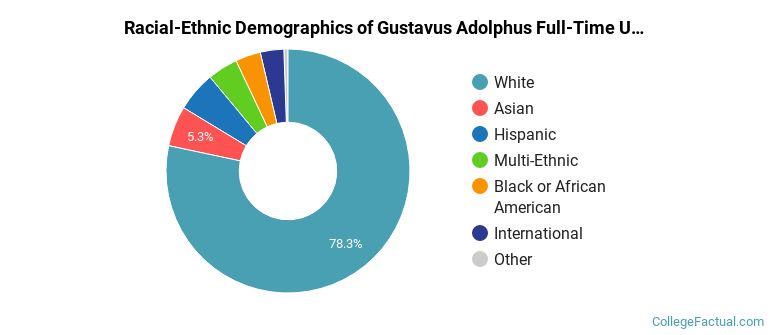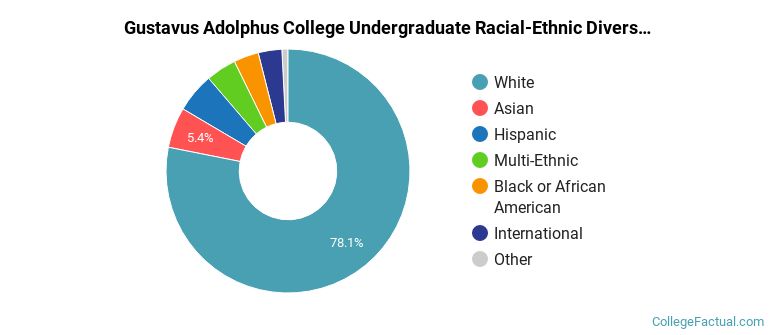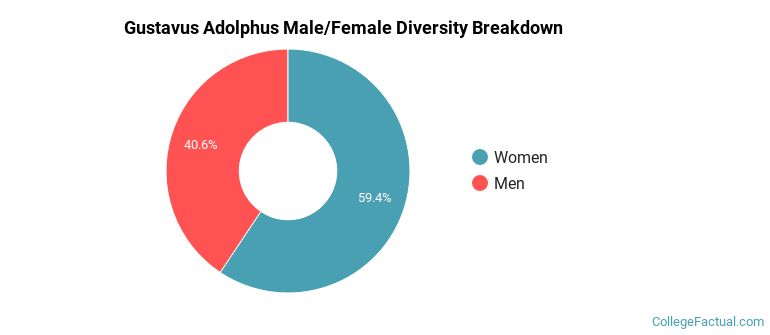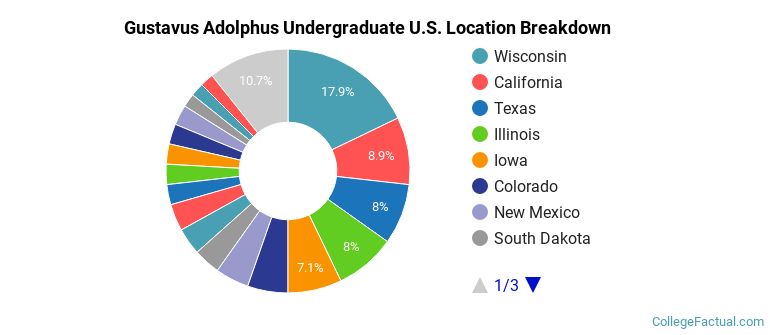 by our College Data Analytics Team
by our College Data Analytics TeamGustavus Adolphus total enrollment is approximately 2,230 students.
Male/Female Breakdown of Undergraduates
The full-time Gustavus Adolphus undergraduate population is made up of 59% women, and 41% men.

For the gender breakdown for all students, go here.
Gustavus Adolphus Racial/Ethnic Breakdown of Undergraduates

| Race/Ethnicity | Number |
|---|---|
| White | 1,722 |
| Hispanic | 127 |
| Asian | 113 |
| Multi-Ethnic | 94 |
| Black or African American | 79 |
| International | 62 |
| Unknown | 16 |
| Native Hawaiian or Pacific Islander | 3 |
See racial/ethnic breakdown for all students.

| Race/Ethnicity | Number |
|---|---|
| White | 1,730 |
| Hispanic | 127 |
| Asian | 114 |
| Multi-Ethnic | 94 |
| Black or African American | 79 |
| International | 63 |
| Unknown | 16 |
| Native Hawaiian or Pacific Islander | 3 |

There are approximately 1,306 female students and 924 male students at Gustavus Adolphus.
Gustavus Adolphus ranks 697 out of 2,183 when it comes to geographic diversity.
21.36% of Gustavus Adolphus students come from out of state, and 4.62% come from out of the country.

The undergraduate student body is split among 30 states (may include Washington D.C.). Click on the map for more detail.

| State | Amount |
|---|---|
| Wisconsin | 20 |
| California | 10 |
| Illinois | 9 |
| Texas | 9 |
| Iowa | 8 |
Students from 28 countries are represented at this school, with the majority of the international students coming from Vietnam, Pakistan, and Mexico.
Learn more about international students at Gustavus Adolphus.
A traditional college student is defined as being between the ages of 18-21. At Gustavus Adolphus, 90.88% of students fall into that category, compared to the national average of 60%.

| Student Age Group | Amount |
|---|---|
| 20-21 | 1,027 |
| 18-19 | 955 |
| 22-24 | 154 |
| 25-29 | 10 |
| 35 and over | 6 |
| 30-34 | 2 |
| Under 18 | 0 |
Footnotes
*The racial-ethnic minorities count is calculated by taking the total number of students and subtracting white students, international students, and students whose race/ethnicity was unknown. This number is then divided by the total number of students at the school to obtain the racial-ethnic minorities percentage.
References
Department of Homeland Security Citizenship and Immigration Services
Image Credit: By This file is lacking author information under License